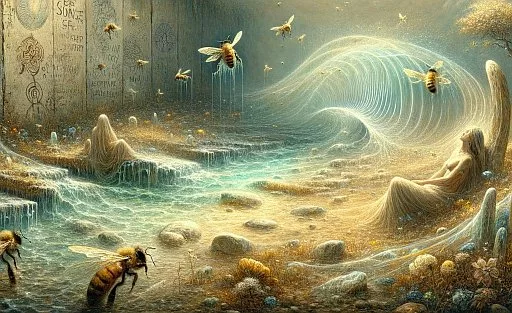Flowing sea, on the edge of winter,
Inside a cold crystal river.
And I wake up. August laps at my bones.
Slow-motion. Unstoppable,
Like the whirling of a tiny heart.
At the foot of a humming waterfall, incredulous,
a dormant sine wave resonates.
Crystalline luminescences.
The bees, enamored of the noonday collapse
And the enchantment is yours.
You possess me like a gulp of air.
Sometimes, I feel pollen,
In the arms of the north wind.
Millions of children are watching me,
From the womb of impenetrable mothers.
…
On the wall of the fallen,
my name slips away
like August flowers
On deserted graves.
Filed for legal guardianship with Patamu: certificate
Video
A brief note on the origins of Japanese Haiku
Japanese haiku poetry has a rich history dating back to the 17th century, when it emerged as a popular expression. Haiku, a traditional Japanese poetic form, typically consists of three lines with a structure of 5-7-5 syllables. These short poems often capture a moment, emotion, or observation of nature with simplicity and depth. Some of the significant haiku poets include Matsuo Basho, Yosa Buson, and Kobayashi Issa. Matsuo Basho is the haiku master known for his reflective and contemplative verses. One of his famous haiku reads:
An old silent pond
A frog jumps into the pond-
Spray. Silence again.
Yosa Buson, a painter and poet, infused his haiku with vivid images and emotions. On the other hand, Kobayashi Issa brought a sense of humor and compassion to his works, often focusing on the everyday experiences of ordinary people. Haiku continues to be a beloved form of poetry, celebrated for its simplicity and profound impact.
If you like these poems, you can always donate to support my activity! One coffee is enough!


